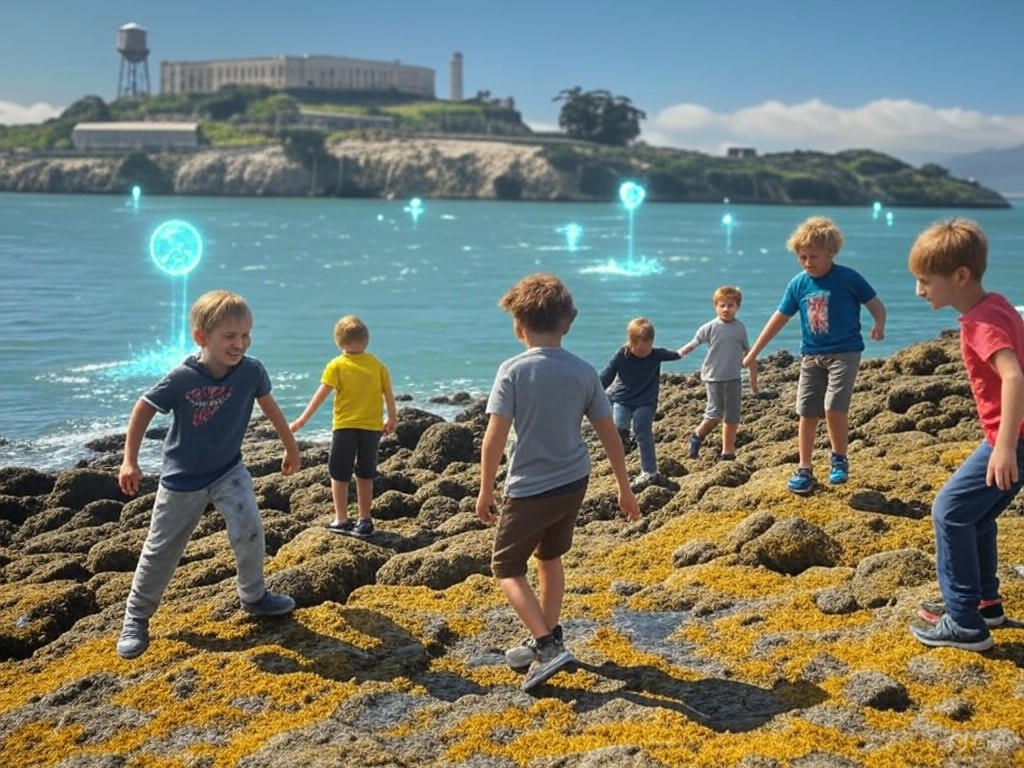
Alcatraz Childhood Memories: Woman Shares Her Story
Alcatraz Childhood Memories: Beyond the Prison Walls
Imagine waking up to the gentle crash of waves and the distant call of seagulls, all while living just steps from one of history’s most infamous prisons. Alcatraz childhood memories like these belong to a small group of families who turned the rocky island into an unexpected home. One woman’s reflections show how everyday life unfolded in this extraordinary setting, blending innocence with the shadow of incarceration.
While Alcatraz is often linked to daring escapes and hardened criminals, her story flips that narrative. Growing up there in the 1950s meant navigating a world where prison guards were neighbors and inmates were a constant, if distant, presence. It’s a reminder that even in places shrouded in mystery, kids found ways to play, learn, and create lasting bonds.
Life on the Rock: Early Alcatraz Childhood Memories
Her earliest Alcatraz childhood memories start with simple joys, like the rhythmic sound of waves lapping against the shore and the salty breeze off San Francisco Bay. Her father, a dedicated prison guard, relocated the family to the island in the 1950s, joining around 60 other households in a tight-knit community. What might sound like a plot from an adventure novel was, for her, just daily life.
“We saw it as normal back then,” she once shared in an interview, a sentiment echoed by many who grew up there. The island operated like a self-contained village, complete with homes, gardens, and even a sense of routine amid the fortress-like surroundings. These Alcatraz childhood memories highlight how children adapted, turning potential isolation into a playground of exploration.
Have you ever thought about how a place’s reputation shapes our view of it? For these kids, Alcatraz wasn’t about fear—it was about family and resilience, offering lessons on adapting to the unexpected.
Exploring Alcatraz Childhood Memories: Adventures and Playtime
Childhood on Alcatraz meant inventing fun in unusual spots, from the old parade grounds to the windswept hills. Kids played baseball, raced bicycles, and even flew kites in the bay’s relentless winds, creating Alcatraz childhood memories that mixed thrill with everyday play.
- One favorite spot was the shoreline, where feeding bread to small sharks became a daring ritual, teaching kids about the island’s wild side.
- With about 75 children on the island at its peak, friendships blossomed during daily boat trips to the mainland for school, fostering a community that felt unbreakable.
- These shared experiences turned what could have been a lonely outpost into a vibrant, kid-friendly haven.
Unexpected Joys: Traditions in Alcatraz Childhood Memories
Life wasn’t all adventure; it included heartwarming traditions that added normalcy. Families hosted Halloween parties, potlucks, and even teen dances in communal spaces originally built for military use. Christmas Eve stood out, with children singing carols at the warden’s house—and sometimes for the prisoners themselves, a small act that humanized the place.
These moments, drawn from Alcatraz childhood memories, show how families created warmth in a stern environment. It’s like turning a fortress into a neighborhood block party—what better way to build resilience?
Alcatraz Childhood Memories: Coexisting with Infamous Inmates
Living near notorious figures like Al Capone or the Birdman of Alcatraz added an layer of intrigue to daily life, but it rarely overshadowed the fun. Children were strictly taught to avoid inmates, with rules like wearing ID dog tags and steering clear of prison areas ensuring safety.
Occasional glimpses, such as brief waves during family walks, wove into Alcatraz childhood memories without causing alarm. Parents’ vigilance created a buffer, allowing kids to focus on growth rather than danger.
Alcatraz Childhood Memories: The Tension of Escapes
Not all Alcatraz childhood memories were lighthearted; events like the 1962 escape left lasting impressions. Jolene Babyak, for instance, woke to the blaring siren at age 15, a signal for everyone to stay indoors and wait it out. These rare incidents, though tense, became part of the island’s lore, teaching lessons about security and community support.
How would you handle such unpredictability in your own life? For these children, it built a unique strength, turning potential fear into stories of endurance.
School Life and Social Bonds in Alcatraz Childhood Memories
Without a school on the island, commuting by boat to San Francisco added an extra adventure to the routine. This daily trip not only connected kids to the outside world but also sparked Alcatraz childhood memories of camaraderie and excitement.
- Teenagers turned island spaces into dance halls, hosting events that mixed music, laughter, and a bit of rebellion.
- Sneaking into off-limits areas, under the watchful eyes of guards, tested boundaries and created tales to share for years.
Outside school, the novelty of living on Alcatraz drew curious friends from the mainland, turning visits into opportunities for storytelling. These experiences highlight how Alcatraz childhood memories blended isolation with social vibrancy, much like any kid’s life with a twist.
The Emotional Side of Alcatraz Childhood Memories
Despite the prison’s intimidating reputation, most children felt secure, thanks to their parents’ commitment and the strong community ties. Yet, realities like red lights signaling riots or routine security checks added depth to Alcatraz childhood memories, mixing safety with awareness.
Residents often spoke of the emotional balance—joy in play contrasted with the ever-present rules. It’s a poignant reminder that childhood, no matter the setting, involves navigating emotions and learning from contrasts.
Lasting Impacts: Reflections on Alcatraz Childhood Memories
For those who experienced it, Alcatraz childhood memories are a tapestry of joy and hardship, from playing on parade grounds to the thrill of boat rides. A comparison table shows how their lives differed from typical urban childhoods:
| Alcatraz Childhood | Typical Urban Childhood |
|---|---|
| Daily boat commutes to school | Short walks or bus rides |
| Playing near guard towers and feeding sharks | Neighborhood parks and sports fields |
| Strict rules and ID tags for safety | Basic street safety guidelines |
| Island-wide events and dances | Local community gatherings |
| Living alongside famous inmates | Diverse but less dramatic neighbors |
These differences enriched their stories, offering life lessons on adaptability and community. Many have shared their experiences through books and reunions, preserving a slice of history.
Conclusion: Cherishing Alcatraz Childhood Memories
In the end, Alcatraz childhood memories paint a picture of resilience and wonder, where a notorious prison became the backdrop for ordinary family life. For this woman and others, it shaped who they are, blending adventure with profound lessons. What’s your take on turning challenges into cherished stories?
If you’re fascinated by this topic, I recommend diving into memoirs like “Children of Alcatraz: Growing Up on the Rock” from Claire Rudolf Murphy. Share your thoughts in the comments, or explore more hidden history stories on our site. Let’s keep these tales alive together.
References
- Inside Edition. (n.d.). *The Children Who Once Called Alcatraz Home*. Retrieved from Inside Edition.
- YouTube. (n.d.). *Video on Alcatraz residents*. YouTube Link.
- Scholastic. (2024). *Growing Up on Alcatraz*. Scholastic Scope.
- Travel Courier. (n.d.). *Tales from Alcatraz*. Travel Courier.
- Murphy, C. R. (n.d.). *Children of Alcatraz: Growing Up on the Rock*. Author’s Site.
- Scholastic. (2024). *StoryWorks on Alcatraz*. Scholastic StoryWorks.
- YouTube. (n.d.). *Another Alcatraz video*. YouTube Link.
- Cronkite Journal. (2022). *Relevant Alcatraz study*. Cronkite ASU.






